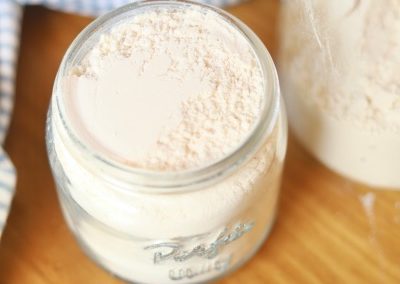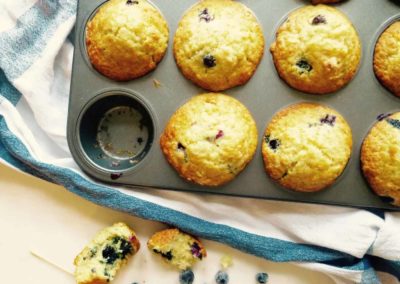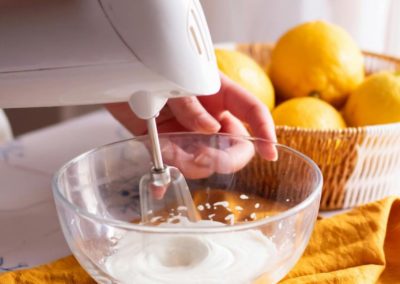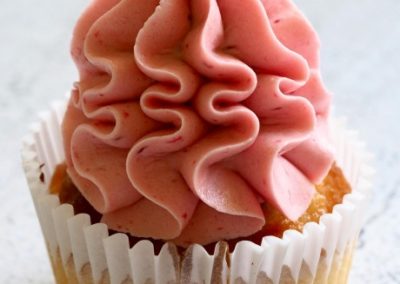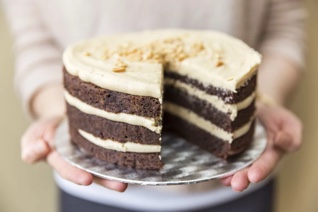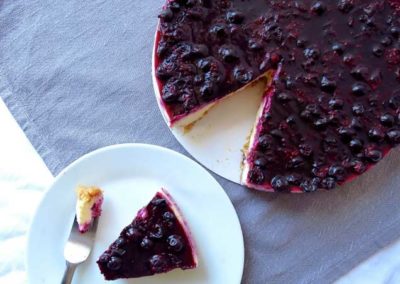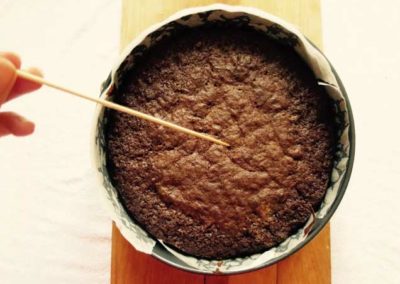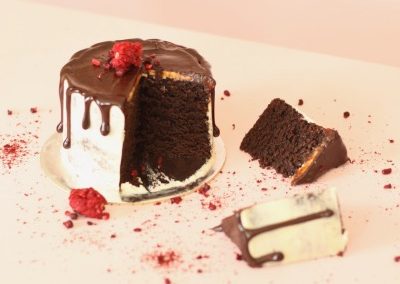
HOW TO: TIPS & TRICKS
BAKING POWDER VS BAKING SODA

“Baking powder vs baking soda – what is the difference!?”
I am often asked this question and for good reason too. They both look the same and seem to do the same thing right? Well, not quite.
This is where baking gets ‘sciencey’ and when you are finished reading this post, you are going to be quite the expert on the difference between these two chemical leaveners, which are not the same by the way.
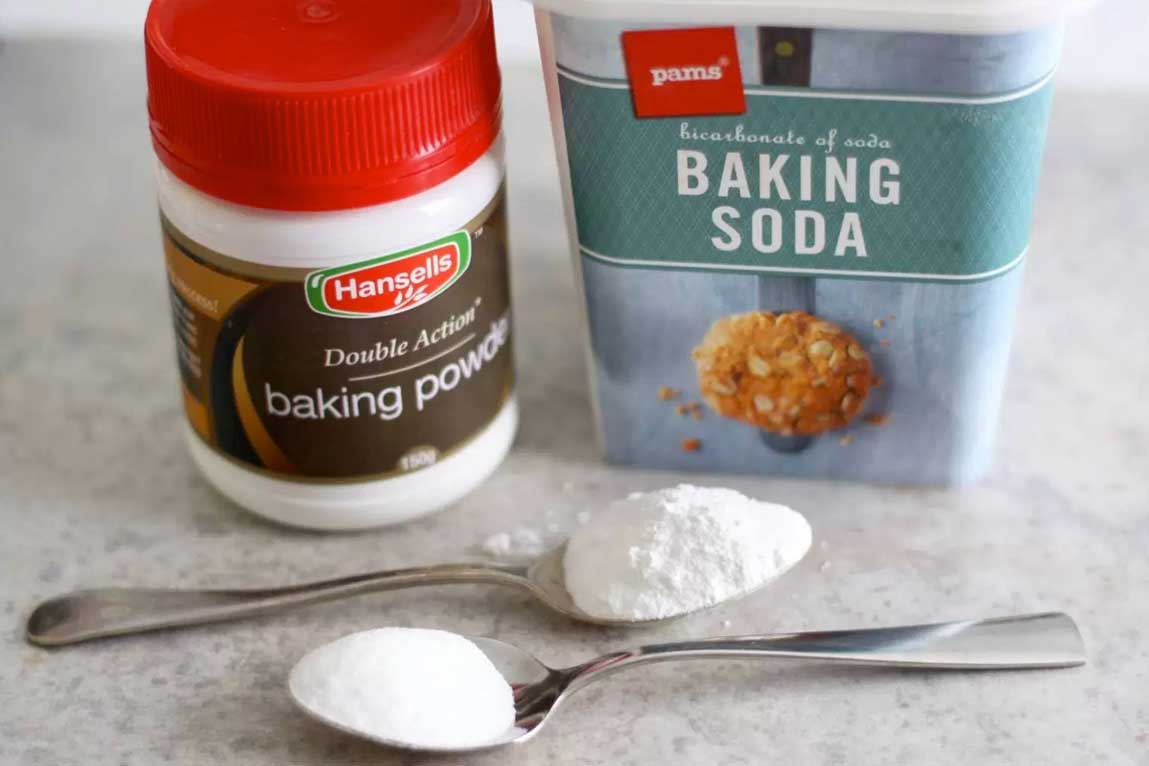
Let’s start with…

Baking Soda (AKA bicarbonate Soda or sodium bicarbonate):
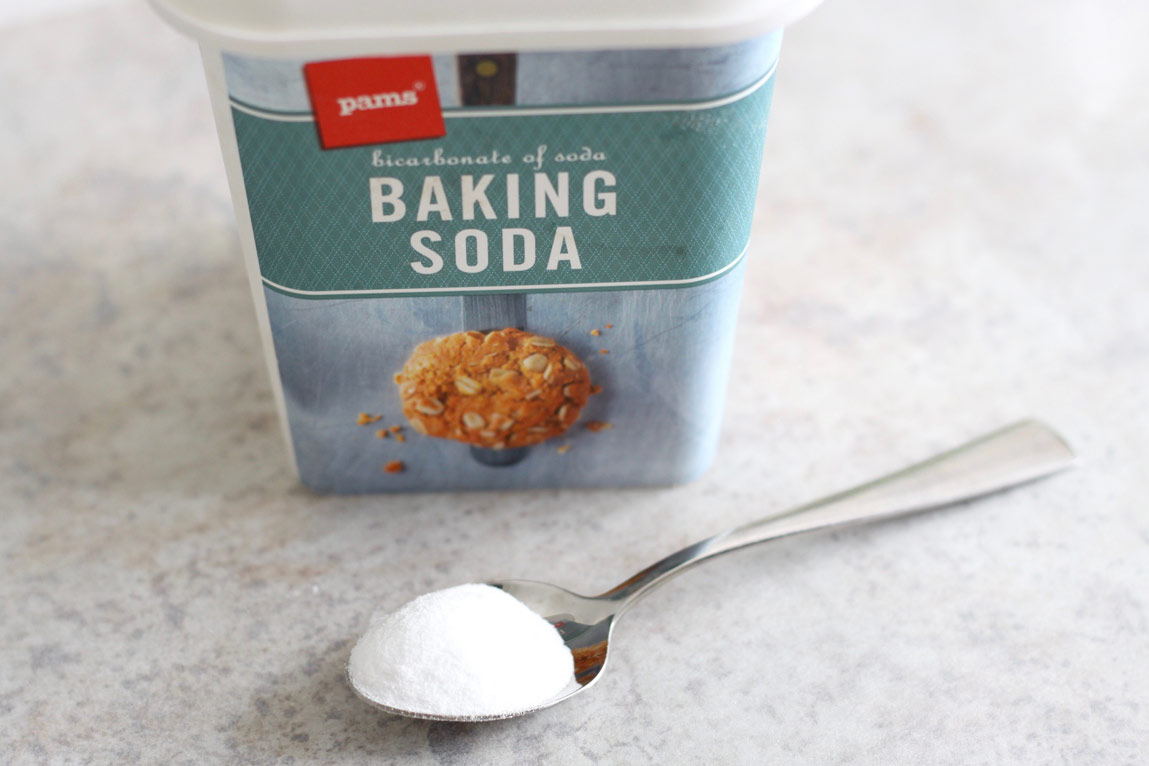
1. Baking soda is a ‘base’ (or alkaline) and makes carbon dioxide (the air which helps our baked goods rise) in two ways:
- when it is heated
and - when it is mixed with an acidic ingredient
However: when baking soda is heated without an acid, carbon dioxide is released slowly which leaves a yucky soapy, metallic tasting cake.
This is because baking soda is a base and needs an acid to neutralise it.
When it is neutralised, carbon dioxide is released faster which removes the soapy taste.
Isn’t science clever?
Acidic ingredients include: lemon juice, yoghurt, vinegar, honey, cocoa, brown sugar, applesauce, molasses, buttermilk (to name a few).
Do note that because baking soda reacts when mixed with an acid, it’s important to get the cake batter into the oven straight away.
Even though carbon dioxide will continue to be produced in the oven (i.e. when exposed to heat), it’s best to bake the batter immediately for optimal rise.
This is why sometimes you cannot prepare batters ahead of time to bake later as the baking soda has already done a lot of the reacting process.
2. Baking soda is strong – about 3-4 times stronger than baking powder, so you don’t need much.
1/4 teaspoon to 125g (1 cup) flour is usually the rule of thumb when baking, however it also depends on how much acid is in your recipe and what texture you would like.
For example, the more acidic the recipe (i.e. the less baking soda) the more easily it will set.
Remember also that too much baking soda in a recipe and not enough acid will still result in a soapy, metallic taste in the baked good.
Thus, getting the right amount of baking soda in your baking is important, we don’t want soapy tasting cakes!
In short:
- always use baking soda with an acidic ingredient for optimal taste and rise
- only use a small amount
Let’s move to baking powder –
What is baking powder?

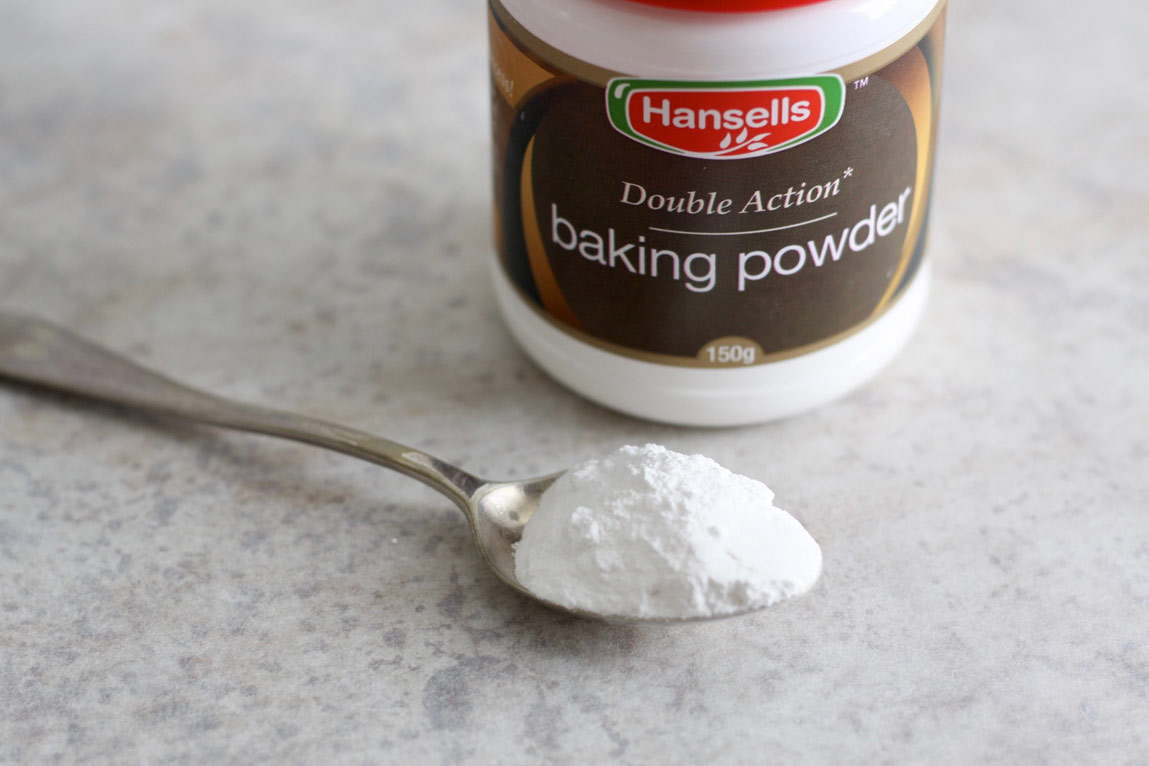
1. Baking powder is a mixture of baking soda (base) and cream of tartar (acid), therefore it is already neutralised.
Baking powder also contains cornstarch which works to separate the acid and base as well as keeping them both dry by absorbing moisture.
In just 1 teaspoon of baking powder there is 1/4 teaspoon of baking soda – I told you baking soda was strong!
2. To react, baking powder needs:
- water
and - heat
Baking powder will begin reacting when it is wet but will do most of the reacting once it is heated. This is called double acting baking powder and this is the most common type of baking powder.
3. Since baking powder already contains an acid, it is more often used when a recipe does not call for an additional acidic ingredient.
A good rule of thumb is 1 teaspoon to 125g (1 cup) of flour.
This leads to our next question:
Why do some recipes call for both baking soda and baking powder?
This is because:
…sometimes we need more leavening than we have acid available in the recipe.
E.g.
- recipes that require both baking powder and baking soda also contain an acid (e.g. brown sugar, yoghurt etc.), however the carbon dioxide created from the acid and baking soda is not enough to leaven the volume of the batter in the recipe. That’s when baking powder is used also. – to add more lift., creating a lighter, fluffier and well risen baked product.
- …it can affect both browning and flavour. E.g. in some muffin, pancake and cakes recipes, buttermilk is required for it’s tangy flavour. If only baking soda was used, it could neutralise all of the buttermilk’s acid, loosing it’s tanginess. However by adding baking powder, (which has it’s own acid), some of the buttermilk’s flavour is left behind and there is still enough leavening for cafe style muffins, fluffy pancakes and well risen light and airy cakes.
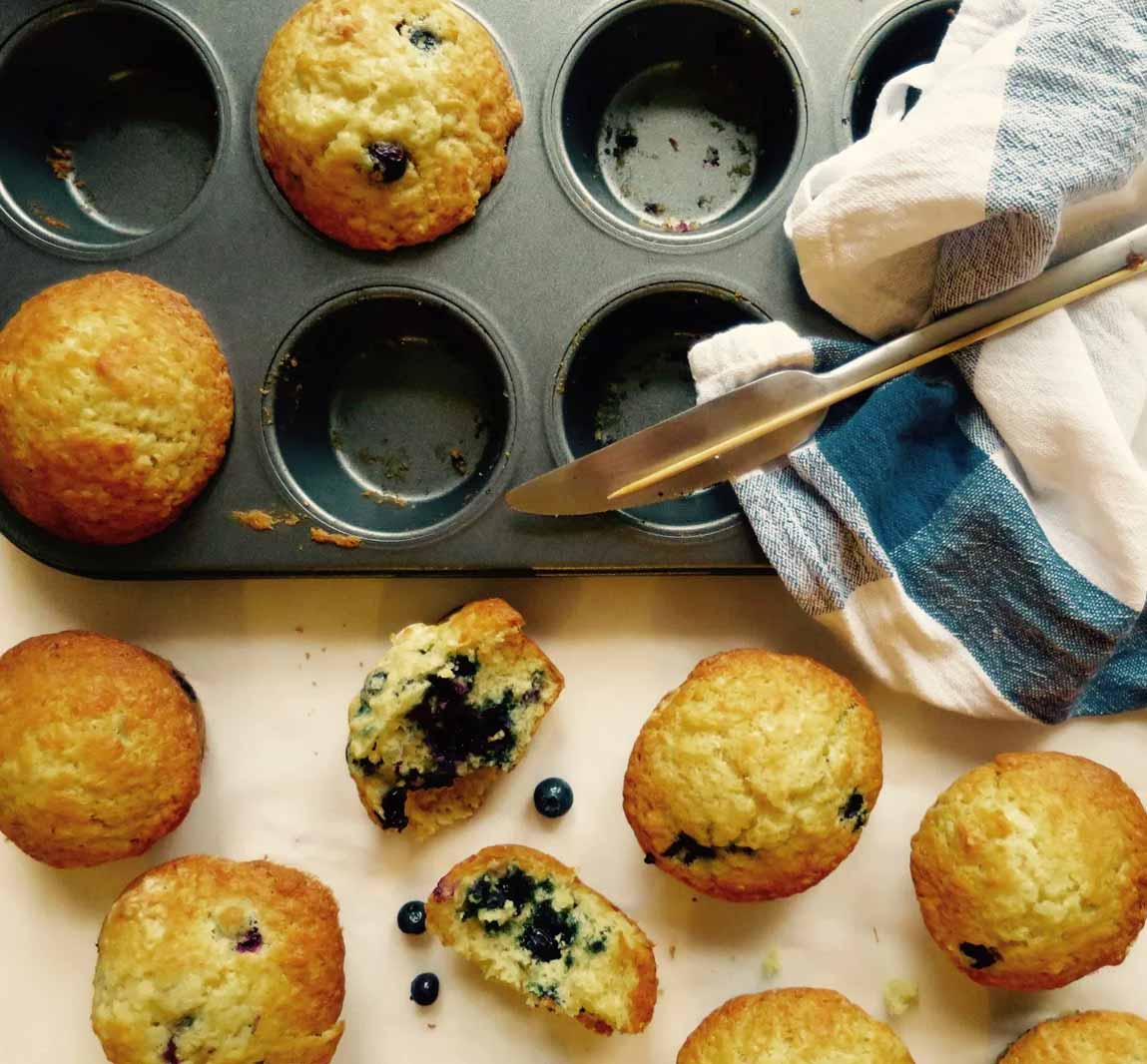
So how does baking powder and baking soda actually work?

We know that when baking powder and baking soda meet heat, they react. However, it’s important to note that they do not create new air bubbles.
I’m going to repeat that:
Baking powder and baking soda do not create new air bubbles.
You would think that they would but really, the carbon dioxide that is released only enlarges the air bubbles that are already there. So baking powder and baking soda are only doing some of the job, and the rest is left to other leaveners like –
- air (which can be created by beaten egg whites, or the creaming method)
This is why my baking students have to sit through a long session of me creaming the butter and sugar together – because we want as many bubbles as we can get so that the baking powder and/or baking soda have more bubbles to enlarge. The more bubbles, the more lift which mean more light and fluffy cakes.
- steam
As the liquid in a batter or dough is heated, steam is created which inflates existing bubbles.
So do you feel like a baking powder and baking soda master now? I hope so!
Just to make sure it’s really sunk in, here’s a quick recap:
- Baking powder and baking powder are both chemical leaveners
- Baking powder has an acid, baking soda needs an acid
- 1/4 teaspoon baking soda to 1 cup flour
- 1 teaspoon baking powder to 1 cup flour
- Baking soda makes things ‘spread’ and baking powder makes things ‘puff’. This is handy to know when baking things like these cookies
- Baking powder and baking soda do not create more bubbles, they enlarge existing ones
Who would have thought science could be so fun? 😉
YOU MIGHT BE INTERESTED IN
![]()

